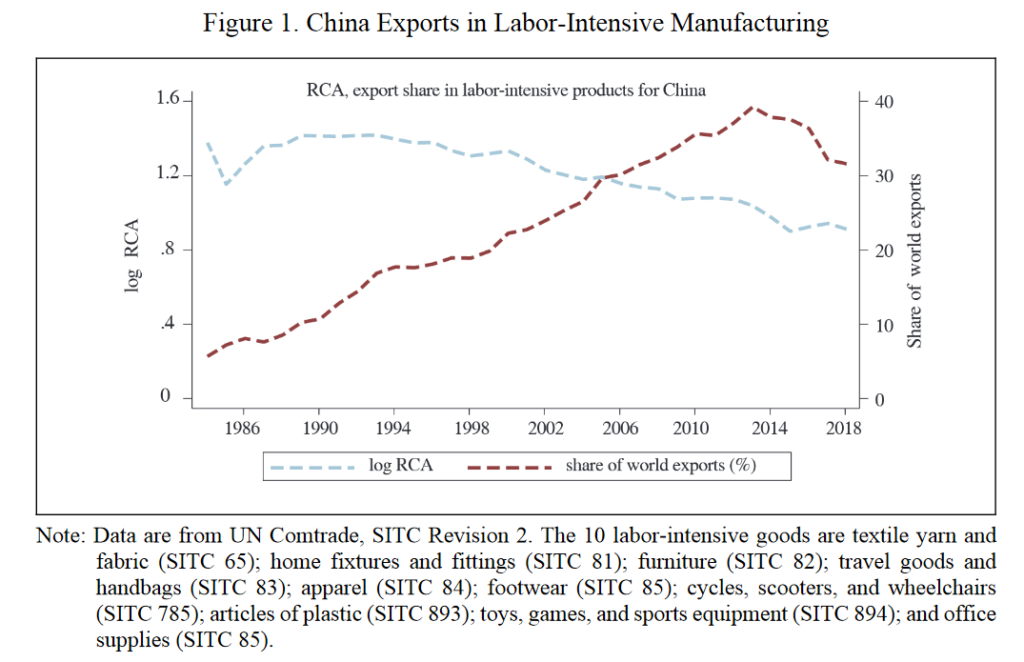We all know the problem; China has peaked in terms of how much low-end stuff it either can or wants to produce.

When Japan graduated from this position the Asian Tigers of Korea, Taiwan, Hong Kong and Singapore were ready to fill the post of world’s low cost producer(s) of choice; but who’ll take over China’s place?
Gordon Hanson of the Harvard Kennedy School and NBER flags four ways that China could deal with this transition based on the experience of others. Videlicet:
- It could mechanize or robotize many of these functions.
- It could pass industries on to those with now better comparative advantage.
- It could send the jobs away from the present clusters near the coasts to locales farther inland.
- It could import cheaper labor.
He notes however none of this appears to be happening, much. Each transitional option has specific problems that seem to be retarding the development. Namely:
- Robotization works well in capital intensive industries like autos but low end manufacturing doesn’t easily lend itself to much mechanization.
- India and Pakistan should be taking the lead but are not. Vietnam, Laos, Cambodia and then in Europe the likes of Turkey and Poland are all having a go but nobody comes close to China’s scale/competence.
- The move inland could be a slow burn. The U.S. and Europe witnessed their manufacturing industries decentralize after WWII as better infrastructure made this possible. China has built impressive connectivity internally so this could be about to happen. So far however, it’s a grudging shuffle not a vigorous march.
- Import cheaper labor. Er, no. [Can we just leave that there?]
The final word in the paper is, literally, the bottom line and its an unsatisfying summary; but here it is nonetheless “Who will fill China’s shoes remains something of a puzzle.”
For the time being, at least as far as low-end scale manufacturing is concerned, it seems China is the new China.
You can access the paper in full via this link Who Will Fill China’s Shoes?
Happy Sunday.